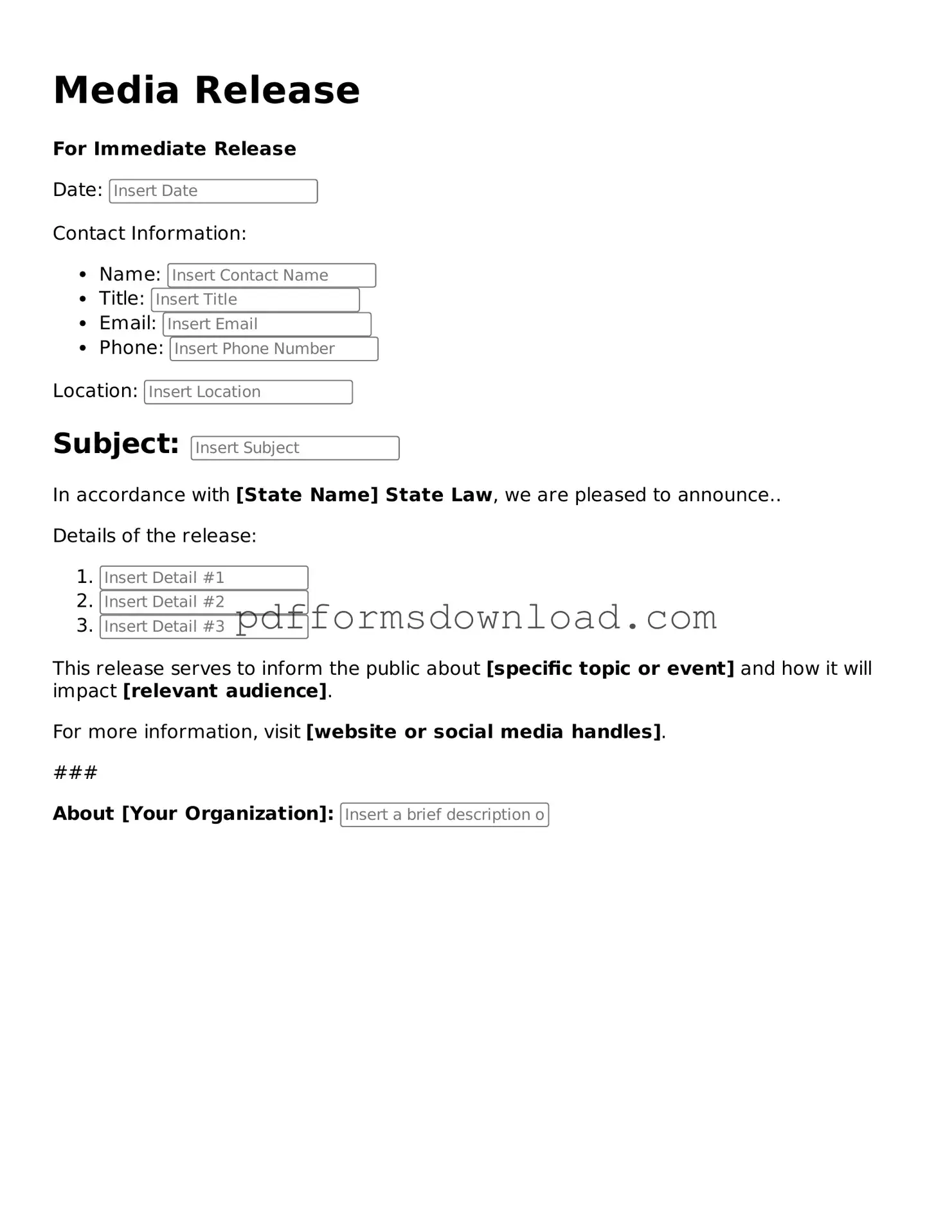What is a Media Release form?
A Media Release form is a legal document that grants permission for an individual or organization to use a person's image, voice, or other likeness in media formats. This form is commonly used in photography, video production, and marketing to ensure that the creator has the right to publish or distribute the material without facing legal issues.
Why do I need to sign a Media Release form?
Signing a Media Release form protects both parties involved. For the creator, it secures the right to use the subject's likeness without future disputes. For the individual granting permission, it clarifies how their image or voice will be used, ensuring they understand the context and purpose of the media.
Who typically needs to sign a Media Release form?
Anyone whose image, voice, or likeness will be captured and used in media should sign a Media Release form. This includes models, actors, participants in events, and even bystanders who may appear in the background of photos or videos. If a minor is involved, a parent or guardian must provide consent.
What information is included in a Media Release form?
A Media Release form typically includes the names of the parties involved, a description of the media being created, the purpose of the release, and any limitations or conditions regarding the use of the media. It may also specify the duration of the permission granted and any compensation details, if applicable.
Can I revoke my consent after signing a Media Release form?
Once a Media Release form is signed, it generally cannot be revoked. However, the specific terms outlined in the form may allow for certain conditions under which consent can be withdrawn. It’s essential to read the document carefully and discuss any concerns with the creator before signing.
Is a Media Release form necessary for all types of media?
While a Media Release form is highly recommended for commercial use, it may not be necessary for personal or non-commercial projects. However, obtaining a release is a good practice to avoid potential misunderstandings or legal complications, even in casual settings.
What happens if a Media Release form is not signed?
If a Media Release form is not signed, the creator may face legal challenges if they use the individual's likeness without permission. This can lead to claims of invasion of privacy or misappropriation of likeness, which can result in costly legal battles.
Are there different types of Media Release forms?
Yes, there are various types of Media Release forms tailored to specific situations. For example, there are forms for photography, video production, and even social media. Each type may have unique clauses that address the specific needs of the project or medium.
Can a Media Release form be used internationally?
While a Media Release form can be used internationally, it’s important to consider the laws of the country where the media will be distributed. Different countries have different privacy and publicity laws, so it’s wise to consult legal counsel if the media will be used outside the U.S.
What should I do if I have questions about a Media Release form?
If you have questions about a Media Release form, it’s best to seek advice from a legal professional. They can provide clarity on your rights and obligations under the form, ensuring you fully understand what you are consenting to before signing.
